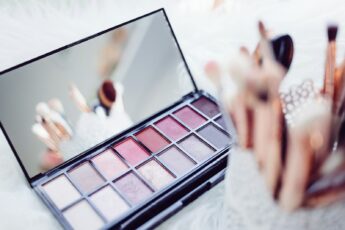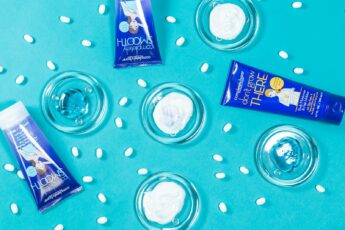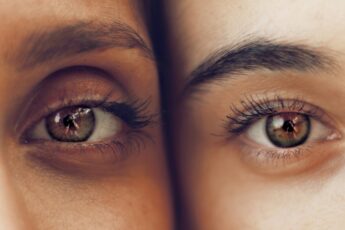Eyelash Growth Fundamentals
I’ve always been fascinated by eyelashes. These tiny hairs frame our eyes and play a crucial role in both protection and beauty. When we talk about eyelash growth, we’re diving into a complex biological process that many people want to understand and enhance.
Let’s start with the basics. Eyelashes grow in a cycle, just like the hair on your head. This cycle has three main phases:
- Anagen (growth phase)
- Catagen (transition phase)
- Telogen (resting phase)
Each eyelash goes through these phases independently, which is why we don’t lose all our lashes at once. The entire cycle for an eyelash typically lasts between 30 and 45 days.
Several factors influence how long and thick our eyelashes grow. Genetics play a big role but so do:
- Age
- Nutrition
- Overall health
- Hormonal balance
- Environmental factors
Understanding these elements helps us see why some people naturally have longer, fuller lashes while others might struggle to achieve the look they want.
“Healthy eyelashes are more than just a beauty asset; they’re your eyes’ first line of defense.”
This quote underscores an important point: eyelashes aren’t just for looks. They protect our eyes from dust, debris, and even excessive light. When we focus on eyelash growth, we’re not only enhancing our appearance but also potentially improving our eye health.
In the following chapters, we’ll explore various methods to promote eyelash growth, from natural remedies to cutting-edge treatments. We’ll separate fact from fiction and provide you with the knowledge to make informed decisions about your lash care routine.
Remember, everyone’s journey with eyelash growth is unique. What works for one person might not work for another. As we delve deeper into this topic, keep an open mind and be patient with your own lash growth process.
Anatomy of Eyelashes
To truly understand eyelash growth, we need to look at the structure of these tiny hairs. Each eyelash grows from a follicle, a small sac in the skin of the eyelid. The follicle determines the shape, thickness, and length of the lash.
Here’s a breakdown of an eyelash follicle:
- Dermal papilla: The base of the follicle, supplying nutrients
- Hair bulb: Where new cells form
- Inner root sheath: Shapes the growing lash
- Outer root sheath: Protects and nourishes the lash
- Shaft: The visible part of the eyelash
The growth cycle of eyelashes is fascinating. As mentioned earlier, it consists of three phases:
- Anagen (growth): Lasts 30-45 days
- Catagen (transition): Lasts 2-3 weeks
- Telogen (resting): Lasts 100 days before the lash falls out
This cycle explains why eyelashes have a maximum length. Once a lash reaches its peak in the anagen phase, it stops growing.
“Understanding your lashes’ natural cycle is key to realistic growth expectations.”
Interestingly, lash density varies among individuals. On average, the upper eyelid has 90-160 lashes, while the lower eyelid has 75-80 lashes. Factors like genetics, age, and overall health influence this density.
I find it remarkable how these tiny structures can have such a big impact on our appearance and eye health. By understanding the anatomy of eyelashes, we can better appreciate the complexity of lash growth and make informed decisions about lash care.
Natural Methods for Enhancing Growth
When it comes to naturally boosting eyelash growth, I’ve found that a holistic approach works best. It starts with nutrition. Eating a balanced diet rich in proteins, vitamins, and minerals can significantly impact lash health.
Key nutrients for eyelash growth include:
- Biotin (Vitamin B7)
- Vitamin E
- Iron
- Omega-3 fatty acids
These nutrients support hair growth throughout the body, including your lashes.
Eyelid hygiene is another crucial factor. Keeping your lash line clean prevents infections and blockages that can hinder growth. I recommend a gentle daily cleansing routine:
- Remove all makeup
- Wash eyelids with mild soap
- Rinse thoroughly with warm water
- Pat dry gently
Speaking of makeup removal, the way you take off your mascara can impact lash health. Harsh rubbing or tugging can damage lashes and even pull them out prematurely.
Here’s a gentler method I’ve found effective:
- Soak a cotton pad in oil-based makeup remover
- Press the pad against closed eyes for 30 seconds
- Wipe downward and outward gently
- Repeat if necessary
“Treat your lashes with care, and they’ll reward you with natural beauty.”
Some people swear by natural oils to promote lash growth. While scientific evidence is limited, many find success with:
- Castor oil
- Coconut oil
- Olive oil
Apply a small amount to your lash line before bed using a clean mascara wand or cotton swab.
Remember, natural methods take time and consistency. Be patient and gentle with your lashes, and you may see improvements in their length and thickness over time.
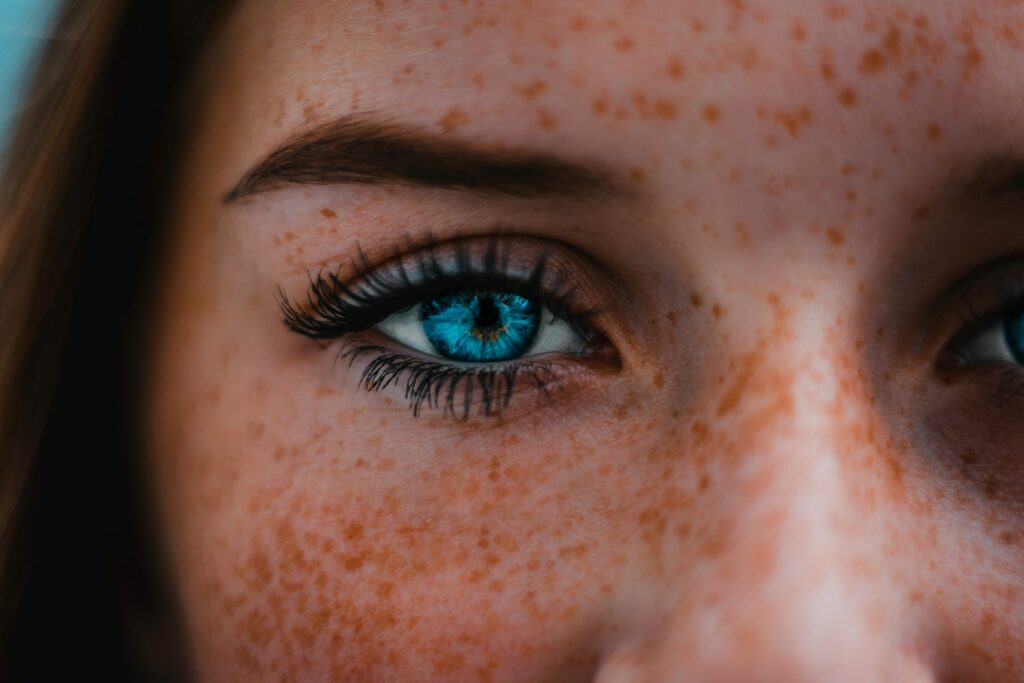
Over-the-Counter Lash Serums
The beauty market offers a wide range of over-the-counter (OTC) lash serums, promising longer, fuller eyelashes. These products have gained popularity in recent years, and I find their evolution fascinating.
Most OTC lash serums contain a mix of active ingredients designed to nourish and stimulate the lash follicles. Common components include:
- Peptides
- Biotin
- Panthenol
- Hyaluronic acid
- Plant extracts (e.g., ginseng, chamomile)
Here’s a quick breakdown of how these ingredients typically work:
| Ingredient | Function |
|---|---|
| Peptides | Stimulate keratin production |
| Biotin | Strengthen lash structure |
| Panthenol | Moisturize and add volume |
| Hyaluronic acid | Hydrate and condition |
| Plant extracts | Provide antioxidants and nutrients |
The application method for most lash serums is straightforward. Generally, you’ll follow these steps:
- Cleanse your face and remove all makeup
- Dry your lashes completely
- Apply the serum along the upper lash line using the provided applicator
- Allow the product to dry before applying other products
Consistency is key when using these serums. Most brands recommend daily application, usually at night.
“Patience is the secret ingredient in any lash growth regimen.”
It’s important to have realistic expectations regarding expected results. Most OTC lash serums take 4-8 weeks to show noticeable improvements. Some users report seeing changes in as little as 2 weeks, while others might need 12 weeks or more.
Remember, results can vary widely between individuals. Factors like genetics, overall health, and consistent application all play a role in the effectiveness of these products.
Prescription Lash Growth Treatments
When OTC options don’t deliver the desired results, some people turn to prescription lash growth treatments. The most well-known of these is bimatoprost, originally developed as a glaucoma medication.
Bimatoprost works by extending the growth phase of the eyelash cycle. It also increases the number of hairs produced during each cycle. The exact mechanism isn’t fully understood, but it likely involves:
- Stimulation of melanin production
- Increased blood flow to the follicles
- Prolonged anagen phase
To use prescription lash treatments effectively:
- Clean your face and remove contact lenses if worn
- Apply the solution along the upper lash line with the provided applicator
- Blot any excess product
- Wait 15 minutes before applying other products or reinserting contact lenses
It’s crucial to follow your doctor’s instructions precisely when using these treatments.
While effective, prescription lash treatments can have side effects. These may include:
- Itching or redness of the eyes
- Darkening of the eyelid skin
- Increased brown pigmentation in the iris
“Weigh the potential benefits against the risks when considering any medical treatment for cosmetic purposes.”
Most users see significant improvements within 8-16 weeks of consistent use. However, the effects aren’t permanent. If you stop using the product, your lashes will gradually return to their natural state.
I find it remarkable how a medication developed for one purpose can have such a dramatic effect on eyelash growth. It’s a testament to the complex interplay between different bodily systems and the potential for scientific discoveries to cross over into the beauty industry.
Lash Extensions and Their Impact
Eyelash extensions offer an immediate solution for those seeking longer, fuller lashes. This popular beauty treatment involves attaching synthetic fibers to natural lashes, creating a dramatic effect. While extensions can transform your look instantly, they also impact natural lash health and growth.
The process of applying lash extensions typically involves the following:
- Cleansing the eye area
- Isolating individual natural lashes
- Applying adhesive to a synthetic lash
- Attaching the extension to the natural lash
Extensions come in various materials, lengths, and curls. Here’s a quick comparison:
| Material | Pros | Cons |
|---|---|---|
| Synthetic | Affordable, holds curl well | Can look less natural |
| Silk | Lightweight, natural-looking | More expensive |
| Mink | Ultra-soft, most natural appearance | Highest cost, ethical concerns |
While extensions offer instant gratification, they come with potential risks to natural lashes:
- Weight strain on natural lashes
- Allergic reactions to adhesives
- Traction alopecia (lash loss from repeated tension)
- Interference with the natural lash growth cycle
“Beauty enhancements should never come at the cost of your natural features.”
Maintenance of lash extensions is crucial. It typically involves:
- Gentle cleansing with oil-free products
- Avoiding oil-based makeup and removers
- Regular brushing with a clean spoolie
- Touch-up appointments every 2-3 weeks
I find the lash extension trend fascinating. It’s a testament to our desire for immediate results in beauty. However, I always encourage considering the long-term impact on natural lash health when opting for extensions.
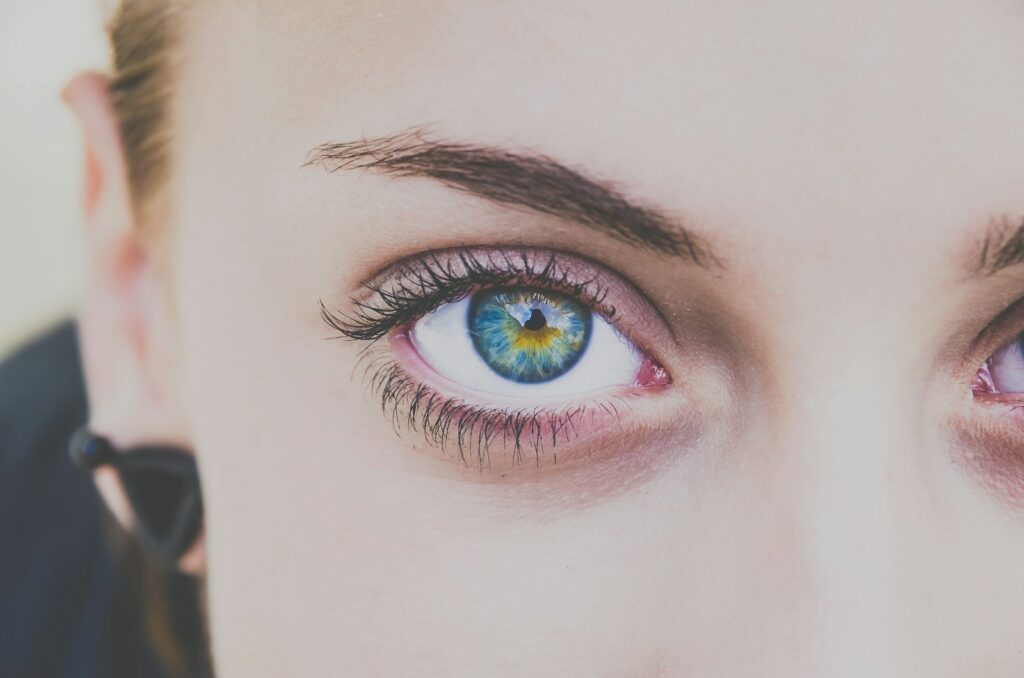
Myths and Misconceptions Debunked
The world of eyelash growth is rife with myths and misconceptions. As someone deeply interested in this topic, I feel it’s important to separate fact from fiction. Let’s tackle some common false claims about lash growth:
Myth 1: Trimming lashes makes them grow faster
Reality: Lash growth occurs at the follicle level, not the tips. Trimming doesn’t affect the growth rate.
Myth 2: Applying petroleum jelly nightly will dramatically increase lash length
Reality: While it may condition lashes, petroleum jelly doesn’t stimulate growth.
Myth 3: Eyelashes grow back indefinitely if pulled out
Reality: Repeated trauma to follicles can lead to permanent lash loss.
Some harmful practices people mistakenly believe will enhance lash growth include:
- Excessive use of eyelash curlers
- Applying mascara to lashes daily without proper removal
- Using growth serums not approved for eye area use
These can actually damage lashes and impede growth.
When it comes to lash growth, I always advocate for evidence-based approaches. Scientific research supports:
- Proper nutrition for overall hair health
- Gentle lash care and hygiene
- Use of clinically-tested growth serums or prescriptions
- Regular lash conditioning with safe, natural oils
“In the quest for beauty, always let science be your guide.”
It’s crucial to approach lash enhancement with a critical eye. Marketing claims can be enticing, but understanding the biology of lash growth helps in making informed decisions. I encourage everyone to do thorough research and consult professionals when considering any lash growth treatment.
Future of Eyelash Enhancement
The world of eyelash enhancement is rapidly evolving. As someone who closely follows beauty industry trends, I’m excited about the emerging technologies in this field. These innovations promise to revolutionize how we approach lash growth and appearance.
Some cutting-edge developments include:
- Stem cell therapy for lash follicle regeneration
- Nanotechnology in lash growth serums
- 3D-printed lash extensions
- Gene therapy targeting lash growth factors
Here’s a glimpse into how these technologies might shape the future:
| Technology | Potential Impact |
|---|---|
| Stem cells | Revive dormant follicles |
| Nanotech | Enhanced delivery of growth-promoting compounds |
| 3D printing | Custom, ultra-realistic extensions |
| Gene therapy | Permanent alteration of lash growth patterns |
While these advancements sound promising, they also raise important ethical considerations. We must ask ourselves:
- How far should we go in altering natural features?
- What are the long-term effects of these interventions?
- How can we ensure these technologies are safe and accessible?
“Innovation in beauty should enhance, not replace, our natural features.”
As we look to the future, I believe we’ll see a blend of high-tech solutions and a return to natural, holistic approaches. The key will be finding a balance that promotes healthy lash growth while satisfying our desire for beauty enhancement.
Conclusion: Balancing Beauty and Health
After exploring the various aspects of eyelash growth and enhancement, I’ve come to appreciate the complexity of this seemingly simple feature. The journey to longer, fuller lashes is as much about health as it is about beauty.
When considering any lash enhancement method, it’s crucial to have realistic expectations. Remember:
- Natural lash growth is limited by genetics and biology
- Quick fixes often come with potential risks
- Consistent care yields the best long-term results
Here’s a summary of key long-term lash care strategies:
- Maintain a nutrient-rich diet
- Practice gentle, thorough makeup removal
- Use conditioning treatments regularly
- Avoid harsh chemicals and excessive heat near the eyes
- Consider scientifically-backed growth serums
“True beauty lies in the health and vitality of your natural features.”
I strongly recommend consulting with professionals before trying any new lash enhancement method. Dermatologists, ophthalmologists, and licensed estheticians can provide valuable insights tailored to your individual needs and concerns.
In conclusion, the quest for beautiful lashes should never compromise eye health or natural lash integrity. By combining scientific understanding with mindful care practices, we can achieve the lash look we desire while maintaining the health of these important features.
As the field of eyelash enhancement continues to evolve, stay informed, be critical of bold claims, and always prioritize the health of your eyes and lashes. After all, healthy lashes are the foundation of any beautiful eye look.
